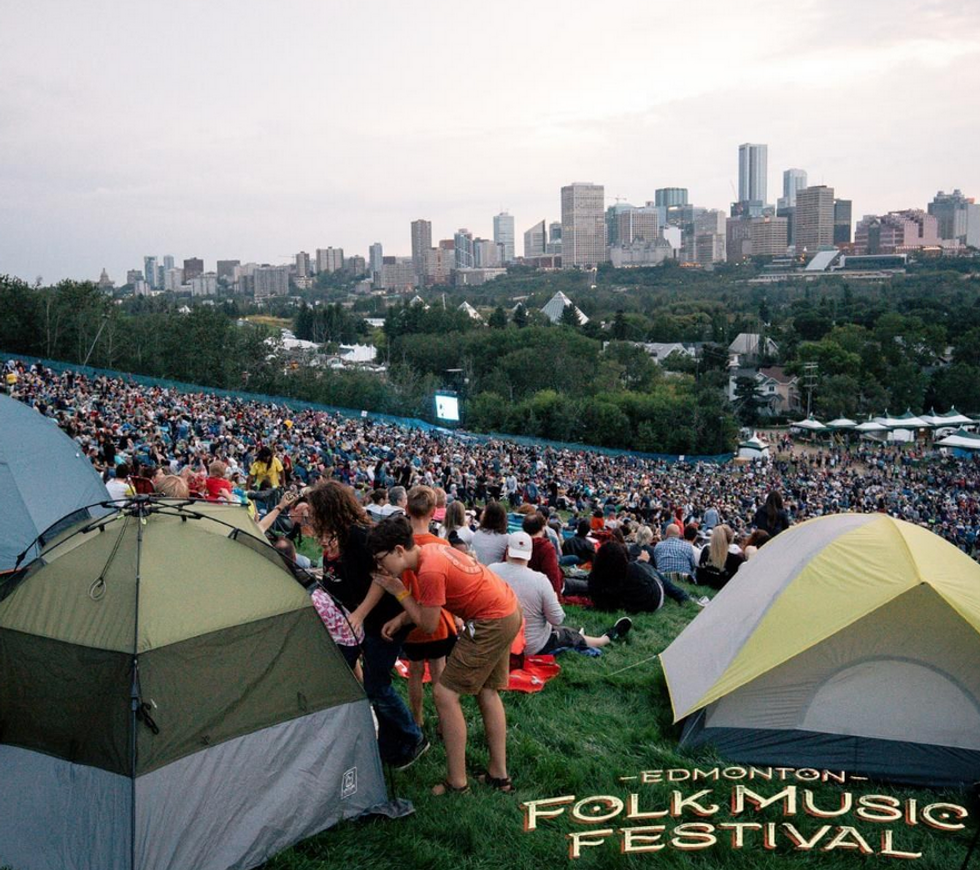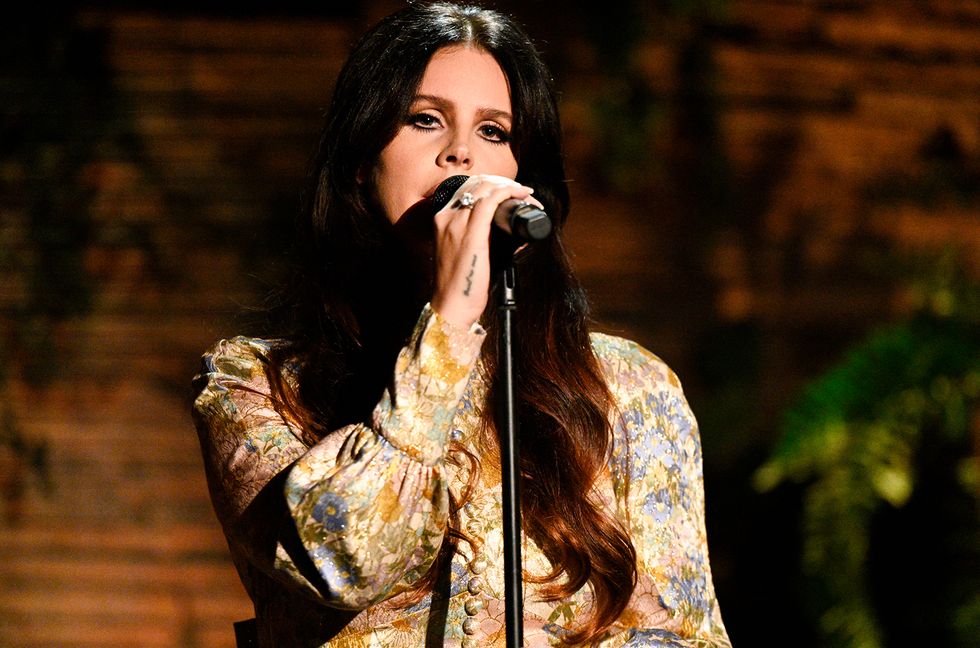Summer Folk Festivals Continue To Thrive
Regard;ess of media coverage spinning bad news for music fests, longstanding folk-based events across the nation continue to thrive and prosper. Richard Flohil attended five this summer and had a blast, as his story richly tells.

By Richard Flohil
Summer’s over and the festival scene is in trouble — so major feature articles in The Globe and Mail, The National Post and The Toronto Star have insisted.
They all pointed to the collapse of the proposed Woodstock event and the last-minute cancellation of the overbooked, overcooked Roxodus Festival at an out of the way airfield in southwestern Ontario.
The bloom is off the rose; there are too many festivals, young people aren’t interested, older people won’t go, headliners are too expensive, sponsors are hesitant...the list went on.
And not one of the articles mentioned that folk festivals across the country had one of their best years ever, with solid community support, strong line-ups and — in many cases — close to record sell-out crowds.
Why? Most Toronto-based music writers seem to have a confirmed idea of what a “folk festival” is — a kumbaya event with side-stage helicopter dancing by buxom young women with Birkenstocks, raucous versions of sea shanties, winsome singer-songwriters examining the colour of the fluff in their navels, and endless drum circles.
That may never have been the case, but the mythology holds firm among those (inside and outside the music industry) who have never been to a folk festival. Take Mariposa, at 59 years the oldest of dozens of folk festivals held every summer, from Bonavista to Vancouver Island. Recent Mariposa ”headliners” have included Tom Cochrane and Red Rider, Stars, Walk off the Earth, Buffy Sainte-Marie — and Gordon Lightfoot shows up every year to sing a song or two.
These festivals have widened the definition of folk music Not only are there crossover artists and nods to pop music past — Calgary offered Belle & Sebastian and Sheila E as “names” this year — but world music, blues, jazz and hip-hop can all be found. Edmonton presented Blue Rodeo and Bruce Cockburn — and the Irish singer/songwriter Hozier headlined the first Thursday night sell-out since Van Morrison played the festival several years back. And Sam Roberts played the Vancouver Folk Fest.
“Headliners” apart, Canadian festivals feature dozens of eclectic “new” artists — from literally all over the world. How do these festivals do major business, when so many of the artists have no profile at radio, sell minimal recordings, and are rarely streamed?
The answer seems to be two-fold: Almost all Canadian folk festivals are largely community-based and volunteer-run, and many of them have significant longevity (Mariposa celebrates its 60th birthday next year; Winnipeg will mark its 45th next year, and Vancouver’s Folk Festival is 42. The Edmonton and Calgary festivals marked their 40th anniversaries in the summer).
The “community” factor can’t be emphasized enough, The two biggest festivals — Winnipeg and Edmonton — have more than 2,500 volunteers each, who handle everything from stage sound to security, performer assistance to publicity, box office to backstage food service. At one festival there were free backstage haircuts for performers, festival staff, guests and band crews. Every festival’s volunteers are, inevitably, a “street team” which takes the festivals’ message to their friends, families and neighbours. And a side result: drastically reduced marketing costs.
Volunteers’ reward: some killer late-night parties, and sincere appreciation from the handful of paid staff. At Winnipeg, 50 percent of the festival’s volunteers have done the job for 10 years or more.
This writer went to five folk festivals this summer — Mariposa, Winnipeg, Calgary, Canmore (a smaller and delightful event amid Alberta’s mountains), and Edmonton. Every one of them experienced full houses (in all but one case, more than 90 percent capacity). And (with the exception of Edmonton, where the weather was overcast) festival-goers experienced sunshine and warm temperatures.
Weather, of course, is always a factor. The late Mitch Podolak, who founded the Winnipeg event, and helped similar festivals in Vancouver, Canso NS, and Calgary, famously said: “Festival organizers make plans — and God laughs!”
Despite risks, the possibility of dreadful weather, and competition from commercial events — Edmonton faces a similar roots music event, Interstellar Rodeo, and Mariposa faces a major country event, Boots & Hearts — folk festivals prosper.
“We were almost sold out,” said Liz Scott, the festival’s artistic director, looking back at one of the most successful events since the festival moved back to Orillia, Ontario, where it was founded 59 years ago. A sell-out is 7,000 paid admissions a day, with three-day passes averaging around $130.00 (the festival also offers free admission to kids 12 and under, and seriously reduced ticket prices for “youth” — 13-18 — and young adults aged 19-24). The festival’s ticket income: an estimated $2.5 million.
Winnipeg, the largest folk event in the country, drew close to 82,000 paid admissions over the four-day event — and it’s held a 40-minute bus ride outside the city in a provincial park. Calgary, which musically rivals Winnipeg for the most eclectic programming, fell just short of 90 percent capacity, with 9,000 paid admissions per day over the four-day event.
And Edmonton, the second-largest folk event in Canada, racked up 93 percent of capacity — with volunteers included, free tickets for kids, guests and social service group members — that added up to only slightly less than 20,000 people per day. And there’s no doubt that the festival would have done even better, but for cloudy weather and the last-minute absence of headliner John Prine, side-lined by heart surgery.
So, in summary, the folk festival model — with major nighttime concerts and multiple stages throughout the day — works. There IS an audience for eclectic music, well-run community-based events, and festivals that appeal to every age demographic.
You may call “folk” the F-word, but in Canada, folk festivals are strong, resilient and prosperous.
Richard Flohil has been involved with folk festivals since 1965, is a former artistic director of Mariposa, and has been to more than 200 festivals in Canada, Australia and the United States.
















